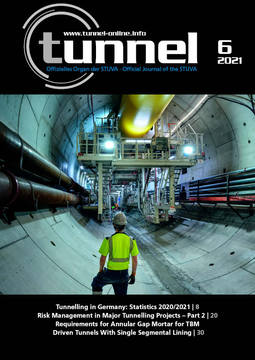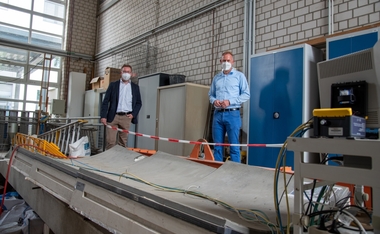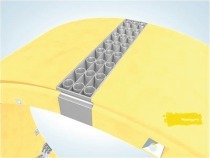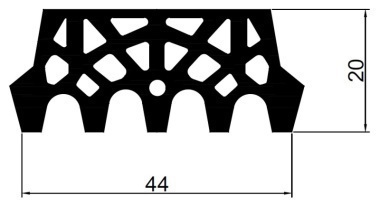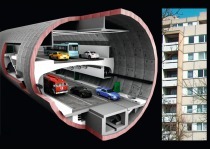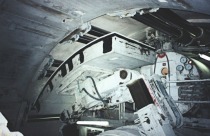Investigation of Frictional Forces in Segment Joints
Enormous forces are at work during the construction of a tunnel. Heavy TBMs cut through the earth under the pressure of the thrust cylinders while assembling the segment lining. Dr. Ansgar Korte from the Department of Civil Engineering at Münster University of Applied Sciences examined the longitudinal and ring joints in more detail – in his dissertation on „Activation of a friction coupling in the ring joint of tunnels with segmental lining“.
The individual rings can deform differently due to a variety of influences, such as the shear forces of the TBM when driving around curves or uneven settlements in the soil. „Major deformations between the individual rings must be prevented otherwise the tunnel would no longer be tight,“ explains Korte. To prevent this, there is, for example, the cam and pocket design. However, if the shear forces are too great, this construction fails. „I have investigated a method in which the shear forces are absorbed by a much finer interlocking.”
Higher Shear Resistance Due to Wave Profile
For further optimisation, Korte investigated various surface profiles. His goal: higher shear resistance. „Among other things, I produced form-fitting, wave-shaped profiles as well as non-form-fitting, roughened surfaces – for example in the form of small pyramid peaks or a sanded surface – and determined the shear resistance in a large number of shear tests.“ The result: especially the form-fitting, wave-shaped profiles tightened during the test. „The normal force in the shear joint is significantly increased here, which gives the wave-shaped profile a big advantage compared to other profiles.“ In the case of the non-form-fitting profiles, the normal force decreases and the clamping applied at the beginning of the test is reduced.
With regard to the non-form-fitting profiling, Korte has therefore taken another approach: He introduces softer intermediate layers compared to concrete in order to dissipate the normal force over them. „The intermediate layer protects the profiling, whereby the clamping is better maintained and thus also leads to higher shear resistances.“ He has tested this with various materials, such as lead, aluminium or elastomers. The hardboard panels already used in practice were also tested with the new types of profiling. The resistances achieved were significantly lower than with the wave-shaped profiles, but a clear increase was achieved compared to the variant already used in practice (smooth concrete surface with hardboard).
However, the essential factor for the size of the achievable frictional resistance is the clamping force acting in the shear joint, which in reality is achieved by the pressing forces of the TBM introduced into the already constructed tunnel tube. This compressed state of the tube will change due to long-term influences from creep and shrinkage of the concrete, temperature deformations, etc. and lead to a decrease in the initial clamping. How much this will decrease has not yet been sufficiently researched. In order to gain further insights, Korte carried out a large-scale test on longitudinally braced original segments. He was able to show that with prestressing of the segments by means of tendons, there is a drop in normal force of about 17 per cent after four years and a drop of about 24 per cent can be expected over a tunnel lifetime of 100 years.

